This blog post briefly summarizes chapter four of the book Engaging Employees Through Strategic Communication by Mark Dollins and Jon Stemmle. Visit engage-employees.com to grab your copy today.
That which gets measured gets done — and rewarded, and supported and funded. As employee communicators increasingly gain skill and comfort with measuring the impact of their efforts, they deliver greater value for their organizations and are held accountable for the resources they’re given to align workers’ actions with their enterprises’ goals. This is a good thing.
Unlike the days where leaders were prone to the “Bring me my communicator; I have something to say” tactical school of thought, employee communicators who bring deep insights and data to the C-suite have significantly greater influence not just in counseling leaders, but in developing strategies and securing the resources to deliver them.
While there is some common ground with measurement approaches to externally-focused communications, there are three fundamental differences in the priorities of what internal measurement should assess, and why.
First, employee communications measurement typically is of a relatively finite audience that we, as communicators, know something about. Whether it’s an employee on our payroll or a member of our organization, we know their names and email addresses, where they’re located, what part of the organization they affiliate themselves with, and what their job is, among other things. That’s very different from many external communication audiences, and the expectations for what we can do with an audience that we “know more” about are different as well.
Second, on the spectrum of outcomes that internal communications measurement should assess, expectations increasingly are on behaviors of our communication targets that are more complex than, for example, purchasing a product or service.
For example, to get employees to follow a safety procedure that better protects them and their colleagues from harm — and saves their organization from costs and legal headaches — communicators must understand what employees already know or don’t know about the safety issue. They’ve got to create an awareness of what the issue is.
But that’s just beginning. Communicators next have the challenge of delivering an understanding of the safety problem — why it happens, how it impacts employees and their peers.
Understanding a safety problem doesn’t necessarily mean employees can, or want, to do anything about it. Communicators have to find the right voice, tone, and compelling case study (or studies) that will help employees come to believe that there’s something in it for them to change, and that the new safety rule or process will work. That would require providing opportunities for employees to have conversations, and potentially input, into the solution.
And finally, third in this scenario, communicators could assess whether employees are actually following the new safety protocol(s), and how communications about the solution either helped or hindered their ability to adopt the new procedure. That, in turn, can connect communication measurement efforts more directly to a financial result, or return on investment.
Each of these challenges offers unique opportunities for communicators to measure the effectiveness of their work. More importantly, if measurement is done correctly, the insights will enable the communicator to course correct what isn’t working, or introduce new communication solutions for any part of a communication campaign that needs help.
As with everything in communication measurement, metrics will line up in one of two camps: outputs and outcomes. Both categories are critical enablers of communication success, but employee communicators need to understand the differences and how different measurement approaches combine to assess efficacy. To be clear, outputs reflect more passive measurement metrics around communication reach, tone and engagement levels. Outcomes reflect sentiment, behaviors and — ultimately — business or financial results like return on investment.
Measuring for awareness
When we measure for awareness, we’re targeting the most basic of communication goals. Based on the content we create and distribute, are employees getting the basic message that something is happening that we need them to know about?
In order for us to break through the clutter of digital, broadcast, print and live/verbal messaging that employees receive both from internal and external sources, our content absolutely must be delivered in a way that is relevant and timely for our internal stakeholders.
When they are aware of information we’re sending, we essentially have an output that can be measured by way of recall and interest levels through a survey or focus group.
If we’ve got great content, but it’s not reaching our intended internal audiences, we’ve got a big problem, too. That’s why measuring the effectiveness of our channels is a critical output that can be measured as well. Assessing email open rates, click throughs, intranet site visits, and preferred channels through surveys or focus groups can paint a vivid picture of our ability to reach our internal stakeholders. Auditing, covered later in the full chapter four of the book, also can help us assess what’s working, and what’s not — and why.
Measuring for understanding
When employees are aware of a business issue or initiative that’s important to their enterprise, the foundation is laid to deliver a better understanding of why it’s important and what the organization wants its internal stakeholders to know or do about it. Then that understanding has to be measured.
For example, knowing that an organization is experiencing higher rates than normal of attrition — employees voluntarily leaving their company — is important for employees and people managers to know. But it’s far more important to ensure they understand what’s driving the higher rate of attrition, and what can be done to address the problem. Are there new policies or procedures being introduced, or training that’s being offered? Do they understand what behaviors are contributing to more employees leaving than usual? And do they have any understanding of what it means for them?
Collecting these kinds of insights can tell communicators definitively if their content is reaching their intended internal stakeholders, and if it’s effective in delivering an understanding of the issue and remedies being offered to address it. That, in turn, can influence additional content and strategies planned for remaining communications.
Of course, communicators would need to apply logic to sequences of questions. For example, if a survey responder disagrees with the first statement in this series about being aware of higher-than-usual attrition rates, he/she would be routed out of the remaining survey questions that dive deeper into understanding the issue.
Measuring for belief
Awareness and understanding metrics for communications most often are a reflection of broader-scale communication strategies. In terms of more efficient ways of delivering broad-scale awareness of a business issue, enterprise-wide portal posts, company-wide emails, or digital signage posts can certainly provide the reach and speed that are highly desirable.
But there also are drawbacks, depending solely on wide-scale communication tactics. An email about an important topic can easily be overlooked by large portions of internal stakeholders in many organizations. And the time an email or intranet reader may invest in a digital communication can be minimal. Broad-scale employee communications channels, by design, often are created for short, focused content, versus more in-depth content required to help employees fully understand a business problem and its related solutions.
All this is a precursor to measuring for belief through communications. While internal stakeholders may be aware of, and understand, a business issue or opportunity, they may be less likely to believe in its importance, or the efficacy of the enterprise’s solution, unless they’re given more direct, in-depth interpersonal communication.
That means someone needs to talk with them. Belief in a solution most often demands employees must engage in a dialogue about the issue and how the organization’s approach to solving it can work for them.
Measurement for belief spans both outputs and outcomes. For outputs, we can measure things like the frequency of opportunities for employees to express their voice in a proposed solution, and in the content analysis of blog posts (how many comments our content it’s generating, or the numbers of “likes” or “shares”).
Looking to outcomes, as we get closer to what leadership cares about, we can measure sentiment. Using focus groups, surveys, and on-line community metrics, we can assess how employees are feeling about an issue or proposed change. We can measure their feelings about trust and authenticity in leadership in communicating with them. And we can assess their intent to act on what the organization is asking them to do.
So essentially, we’re moving beyond what internal stakeholders know about an issue or opportunity, and assessing how our communications are influencing how they feel about it — a strong gateway to their intent to act on it.
DuPont assessed employee sentiment about the future of its businesses after it closed a merger transaction with Dow in 2017. Using a word cloud, the communicators were able to illustrate how employees felt about their future, which largely reflected their awareness, understanding and belief in the future state of the organization.
Measuring for change/behavior
When we measure for change, we’re moving to the treasure chest of employee communications efficacy. When we can correlate how communication influences awareness, understanding, belief and behavior change, we’re demonstrating the ultimate value of strategic internal stakeholder communications.
As with belief, getting to behavior change demands far more interpersonal communication strategies and tactics. People managers will need to fully engage their team members in acting on the solution the organization wants them to adopt. Historically, employees’ No. 1 preferred source of information for their work is from their managers. While intuitively it makes sense to ensure people leaders are equipped and empowered to drive change communications, it’s often an overlooked and underserved population in communication strategy.
Would you like to know more about employee communications measurement? Visit engage-employees.com to grab a copy of the book Engaging Employees Through Strategic Communication and read the complete Chapter 4.
Get Your Copy Of The Engaging Employees Through Strategic Communication Book Or Contact North Star Communications Today

The diagram above shows the different topics covered in the book. Take advantage of the opportunity to enhance your organizational communication strategy and engage your employees effectively by getting your hands on the highly recommended book, Engaging Employees Through Strategic Communication by Mark Dollins and Jon Stemmle. Piqued your curiosity? Want to know why change communications, Block Chain, Artificial Intelligence and employee activism will shape our near-term future? Visit engage-employees.com to grab your copy today.
If you’re looking for expert guidance in implementing change communications, talent development, and coaching in your organization, look no further than North Star Communications Consulting. Contact us today to schedule a free consultation and take the first step toward transforming your organizational communication approach.


